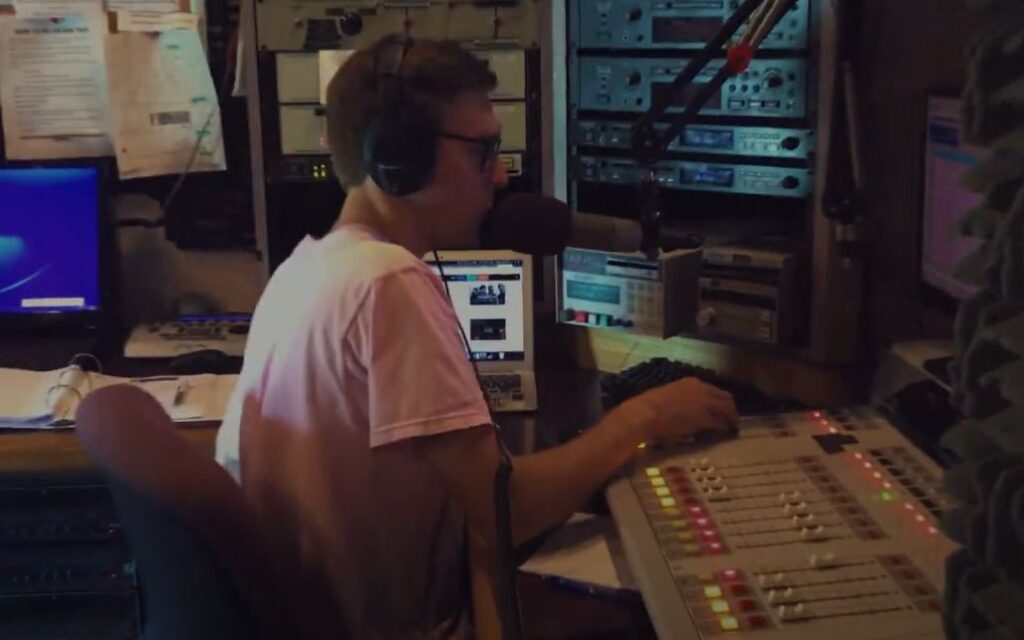
The way that student-run radio is recognized, supported, and remembered has changed dramatically in recent years thanks to the Intercollegiate Broadcasting System (IBS) and the mtvU Woodie Awards. These awards do more than just distribute plaques; they create a lasting legacy, elevate marginalized voices, and strengthen cultural identities in student media. In addition to being incredibly successful in conserving broadcast history, projects such as the WSOU documentary have significantly enhanced the public’s understanding of college radio’s ongoing significance in music and media.
Stations from all over the nation came together for the 2014 IBS conference in New York City, not just to compete, but to pursue a common interest: producing meaningful, authentic radio. Golden Microphone Awards were given to student broadcasters at this event, continuing a tradition that honors outstanding dedication and creativity. Gannon University’s WERG distinguished itself by winning several first-place awards, and Boston’s WIRE Radio was recognized for its superior streaming. Not only were these victories well-earned, but they also helped establish the institution’s legitimacy and motivated student-run teams to strive for greater things.
Overview of IBS Awards, Woodie Awards & WSOU Documentary
| Topic | Details |
|---|---|
| IBS Awards (Organizer) | Intercollegiate Broadcasting System (IBS) |
| Established | 1940 |
| Known For | Golden Microphone Awards recognizing excellence in college radio |
| Notable 2014 Winners | WERG (Gannon University), WONC (North Central College), WIRE Radio (Wentworth Institute) |
| Woodie Awards (Organizer) | mtvU (MTV’s college-focused network) |
| College Radio Woodie Winner (2014) | WESS 90.3 FM (East Stroudsburg University) |
| WSOU Film Title | Pirates of the Airwaves: The WSOU Story |
| Station Featured in WSOU Film | WSOU 89.5 FM, Seton Hall University |
| WSOU Format | Heavy metal, hard rock |
| Fundraising Platform for Film | IndieGoGo |
| Unique Fundraising Gift | 3D-printed pirate ship that functions as a real FM radio |
The mtvU Woodie Awards, especially the College Radio Woodie, on the other hand, offer something just as worthwhile: widespread recognition via popular channels. Based solely on online votes, East Stroudsburg University’s WESS 90.3 FM won first place that year. Their accomplishment demonstrated that, with the right kind of mobilization, grassroots passion can garner national recognition. Even though the Woodies relied heavily on social interaction, their influence was based on genuine community work, frequently fueled by late-night DJ sets, make-it-work promotions, and student-led initiatives that genuinely engaged with their peers.
Seton Hall University’s WSOU 89.5 FM gives this tale an exciting new dimension. With a playlist focused on hard rock and heavy metal, the station did more than just broadcast; it influenced, challenged, and provoked the discovery of alternative music. It accomplished this while residing in a Catholic university, resulting in a tension that was surprisingly adaptable. The film Pirates of the Airwaves: The WSOU Story now immortalizes the dynamic identity that was born out of this unlikely combination.
When the documentary’s creators started an IndieGoGo campaign to raise money for it, they provided something that really spoke to the supporters: a 3D-printed pirate ship radio that wasn’t merely ornamental—it worked. That gesture was symbolic and remarkably reminiscent of the do-it-yourself spirit of college radio. Remarkable, tangible, and fully user-driven.
Stations like WSOU continue to be remarkably resilient in the face of dwindling public confidence in mainstream media. Their live imperfections and unfiltered messages cut through their analog signal, which is impervious to the manipulations of digital algorithms. Spotify playlists use machine logic to shuffle tracks, but WSOU broadcasts voices in real time that are messy, passionate, and resolutely human. This platform is a rite of passage for early-stage broadcasters, not just technical training.
IBS and mtvU have contributed to the reaffirmation over the last ten years that radio is a canvas rather than a relic, particularly on college campuses. Stations receive more institutional support and higher status with each award they receive. When tangible recognition is involved, schools are more inclined to make investments. Additionally, these honors frequently open doors for students to enter national media, record labels, and professional studios.
One interesting case study is the tale of WXOU in Michigan, which won College Radio Station of the Year three times in a row. Instead of corporate oversight, student empowerment created a culture of audience connection and consistency that is reflected in their success. Concurrently, the growth of LPFM (Low Power FM) stations, like the one authorized at Delgado Community College, offers a particularly significant gateway for underrepresented voices and diverse student populations.
College stations go well beyond music by working with other educational initiatives, such as tech-based storytelling at SUNY Adirondack or culinary contests at EVIT. They serve as incredibly effective centers for experimentation, training, and interdisciplinary dialogue. Because of their many uses, student radio stations are especially creative, transforming campus broadcasters into influence architects.
Stations are beginning to connect analog charm with digital opportunity through strategic partnerships and innovative programming. The agility of these platforms is demonstrated by CPP Interactive at Cal Poly Pomona and Stag Radio at the University of Surrey, which was recently broadcast on commercial radio in the UK. College stations are expanding their reach without sacrificing authenticity by entering public channels and moving beyond the confines of dorm walls.
The Woodie Awards’ removal from the mtvU schedule in recent years has left a noticeable gap. These were more than just accolades for a lot of student broadcasters; they were confirmation. However, this disparity has increased the urgency of independent projects like the WSOU movie. The burden of storytelling returns to the community in the absence of centralized celebrations. When properly implemented, these grassroots initiatives are evolutions rather than replacements.
The belief in student radio’s capacity for innovation has significantly increased since the introduction of such recognition initiatives. From whispered campus legends to widely consumed narratives, their storytelling has evolved. The material is at last being preserved and honored, whether via podcast series, station blogs, or full-length documentaries.
